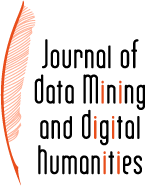 |
Sergio Torres Aguilar ; Vincent Jolivet - La reconnaissance de l'écriture pour les manuscrits documentaires du Moyen Âge
jdmdh:10484 - Journal of Data Mining & Digital Humanities, 22 décembre 2023, Documents historiques et reconnaissance automatique de texte - https://doi.org/10.46298/jdmdh.10484- 1 Université du Luxembourg
- 2 Centre Jean Mabillon
- 3 Université du Luxembourg = University of Luxembourg = Universität Luxemburg [uni.lu]
- 4 Centre Jean Mabillon [ENC]
- 5 École nationale des chartes [ENC]
Handwritten Text Recognition (HTR) techniques aim to accurately recognize sequences of characters in input manuscript images by training artificial intelligence models to capture historical writing features. Efficient HTR models can transform digitized manuscript collections into indexed and quotable corpora, providing valuable research insight for various historical inquiries. However, several challenges must be addressed, including the scarcity of relevant training corpora, the consequential variability introduced by different scribal hands and writing scripts, and the complexity of page layouts. This paper presents two models and one cross-model approach for automatic transcription of Latin and French medieval documentary manuscripts, particularly charters and registers, written between the 12th and 15th centuries and classified into two major writing scripts: Textualis (from the late-11th to 13th century) and Cursiva (from the 13th to the 15th century). The architecture of the models is based on a Convolutional Recurrent Neural Network (CRNN) coupled with a Connectionist Temporal Classification (CTC) loss. The training and evaluation of the models, involving 120k lines of text and almost 1M tokens, were conducted using three available ground-truth corpora : The e-NDP corpus, the Alcar-HOME database and the Himanis project. This paper describes the training architecture and corpora used, while discussing the main training challenges, results, and potential applications of HTR techniques on medieval documentary manuscripts.
